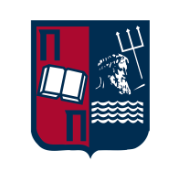Learning Outcomes
The objective of this course is to provide an introduction to broadband technologies and their applications and familiarize students with broadband networks and relevant protocols.
At the end of this course, students will have acquired advanced/in depth knowledge in the field of Broadband Communications Systems, with particular emphasis on baseband processing physical layer techniques, and Medium Access Control design as well as Broadband Networks design and architectures.
The students will be capable of performing numerical calculations of various broadband network parameters, stochastic modelling of transceivers, signal processing algorithm analysis and design and performance assessment by means of analytical evaluations and simulations.
The students will also be capable of comprehending the design principles of a number of Broadband technologies.
Course Contents
- Introduction to broadband networks, main concepts: bandwidth, transmission basics, switching, multiplexing, spread spectrum, transmission media.
- Integrated services networks, access networks, core networks, Integrated services networks: integrated services digital networks (ISDN), broadband integrated services digital networks (B-ISDN).
- Wireline Access networks/technologies: public switched telephone networks (PSTN), digital subscriber line (DSL), wireless-access (broadcasting, mobile, fixed-wireless access–FWA), fiber to the curb/home (FTTX).
- Core networks/technologies: Ethernet, ethernet wide area networks, optical technologies, synchronous optical networks (SONET), wave division multiplexing (WDM), passive optical networks (PONs).
- Wireless wide are broadband technologies: 3G (WCDMA), 4G (LTE, LTE-Advanced), 5G.
- Wireless Local Area Networks: WiFi- IEEE 802.11
- Internet of Things network infrastructures
Recommended Readings
- Behrouz A. Forouzan, “Data Communications and Networking”, Fourth edition, McGraw-Hill, 2007
- W Stallings, Wireless Communciations and Networks, Pearson, 2004.
- D. Tse, P. Viswanath, Fundamentals of Wireless Communciations, 2005.
- T. S. Rappaport, Wireless communications – Principles and practices, Pearson, 2002.
- Russell Τ. (1997): Telecommunication Protocols (McGraw-Hill Education).
- Cajetan M. Akujuobi, Matthew N.O. Sadiku (1997): Introduction to Broadband Communication Systems, Chapman & Hall/CRC
- Andrea Goldsmith, Wireless Communications, Cambridge University Press, 2005.
Learning Outcomes
The aim of the course “Computer Networks II” is to complement the course “Computer Networks I”, in order for the students to deepen their knowledge in Computer Networks and their functions. In particular, through this course the students will get familiar with the operation of the data link layer, the Medium Access Control (MAC) sub-level and the Logical Link Control (LLC) sub-level.
Upon successful completion of the course, the students will be in position to:
- select and apply parity bit, CRC and hamming techniques,
- select and apply information retranslation techniques through the computer network,
- use the corresponding communication protocols,
- combine their knowledge in the field routing,
- use the most appropriate protocol according to the needs of the network, based on correction and retransmission techniques, thus developing a critical way of thinking.
Course Contents
- Section 1: Introduction to the functionality of the Data Link Layer (DLL), Medium Access Control (MAC) and Logical Link Control (LLC) layers, error control, error detection, error correction, retransmission techniques, error detection techniques.
- Section 2: Cyclic Redundancy Codes (CRC), error correction techniques.
- Section 3: Hamming techniques, Forward Error Correction (FEC), retransmission techniques.
- Section 4: Stop-and-Wait (S&W), Alternating Bit Protocol (ABP), Automatic Repeat Request (ARQ), sliding window techniques, Go Back N (GBN), Soptional Repeat (SRP).
- Section 5: MAC protocols; Aloha; Carrier Sense Multiple Access (CSMA); MAC protocols in Wireless Section 6: LANs/MANs/PANs; ΙΕΕΕ 802; x standards; LLC protocols; 802.2 standard.
- In addition, articles, web addresses for useful information, as well as exercises for practicing students are posted in the platform Evdoxos.
Recommended Readings
- Walrand J. (1997): Communication Networks, Prentice Hall.
- Russell T. (1997): Telecommunications protocols, McGraw-Hill.
Associated scientific Journals
- ΙΕΕΕ Computer Networks
- IEEE Communications Magazine
- EEE Access
- IEEE Wireless Communications
- International Journal of Network Management
- Transactions on Emerging Telecommunications Technologies
- EURASIP Journal on Wireless Communications and Networking
Learning Outcomes
The aim of the course is to enable students to understand the basic principles of electromagnetic systems for wireless communications. By concluding the course, students are able to
- identify, describe and distinguish the basic characteristics of electromagnetic systems describe physical laws of electromagnetism using appropriate mathematical tools
- distinguish the type of antenna and examine its characteristics
- compute metrics which are extensively used in wireless systems and design basic wireless links
- analyze and design more complicated wireless systems
By concluding the lab sessions students are able to
- understand physical phenomenon by using mathematical tools
- identify and apply theory in real world problems
- use professional antenna design tools for the first time
Course Contents
Initially, introductory concepts of the Theory of Electromagnetic Fields are provided (Sources of Electromagnetic Fields, Electrostatic Fields, Dielectric Modes and Boundary Conditions, Permanent Magnetic Fields, Biot-Savart Law, Magnetic Flow Density, Gauss Law, Lorenz Power). Subsequently, electromagnetic waves in space are described (Maxwell equations, sinusoidal time variations, free space conditions and wave equation, uniform plane waves in lossless media, wave polarization). Thereafter, the students are introduced to antenna theory and the fields of radiation (potential functions, wave radiation areas, far field assumption, generic calculation methodology of radiation fields by antennas, basic key antenna features, antenna as a circuit element, antenna effective length). Examples of antennas are then studied (Hertz dipole, linear dipole antenna of arbitrary length, dipole λ/2, small circular loop antenna). Finally, the fundamental elements of electromagnetic wave propagation are examined (frequency bands & services/applications, wave classification, Friis’ equation and Free Space Loss, reflection & transmission, plane-earth model).
Papers, lectures, case-studies, examples and web pages with valuable information are uploaded at the course web page (Evdoxos).
Recommended Readings
- “Wireless Communications” in Greek language, Book code in www.eudoxus.gr: 68393538, Edition: 2nd edition/2017, Authors: Kanatas Athanasios, Pantos Georgios, ISBN: 978-960-491-112-7, Publisher: A.Papasotiriou & Sia I.K.E (1st Book)
- “Antennas – Wireless Links”, Book code in www.eudoxus.gr: 18548842, Edition: 1st edition/2018, Writers: Kapsalis C., Kottis P., ISBN: 960-8050-96-0, Publisher: A. Tziola & Sons S.A. (2nd Book)
Associated scientific Journals
- ΙΕΕΕ Transactions on Antennas & Propagation
- IEEE Communications Magazine
- IEEE Antennas & Wireless Propagation Letters

